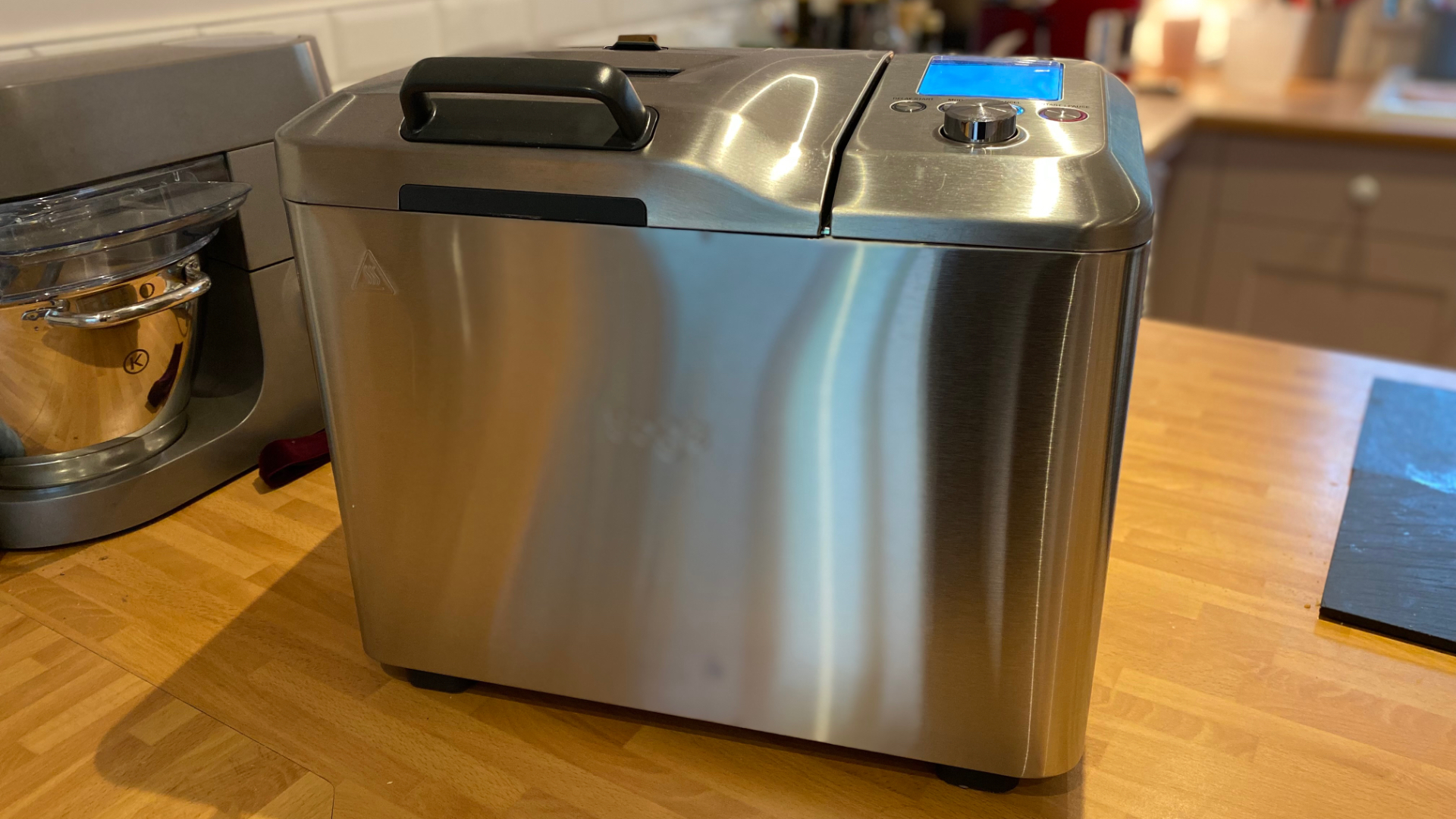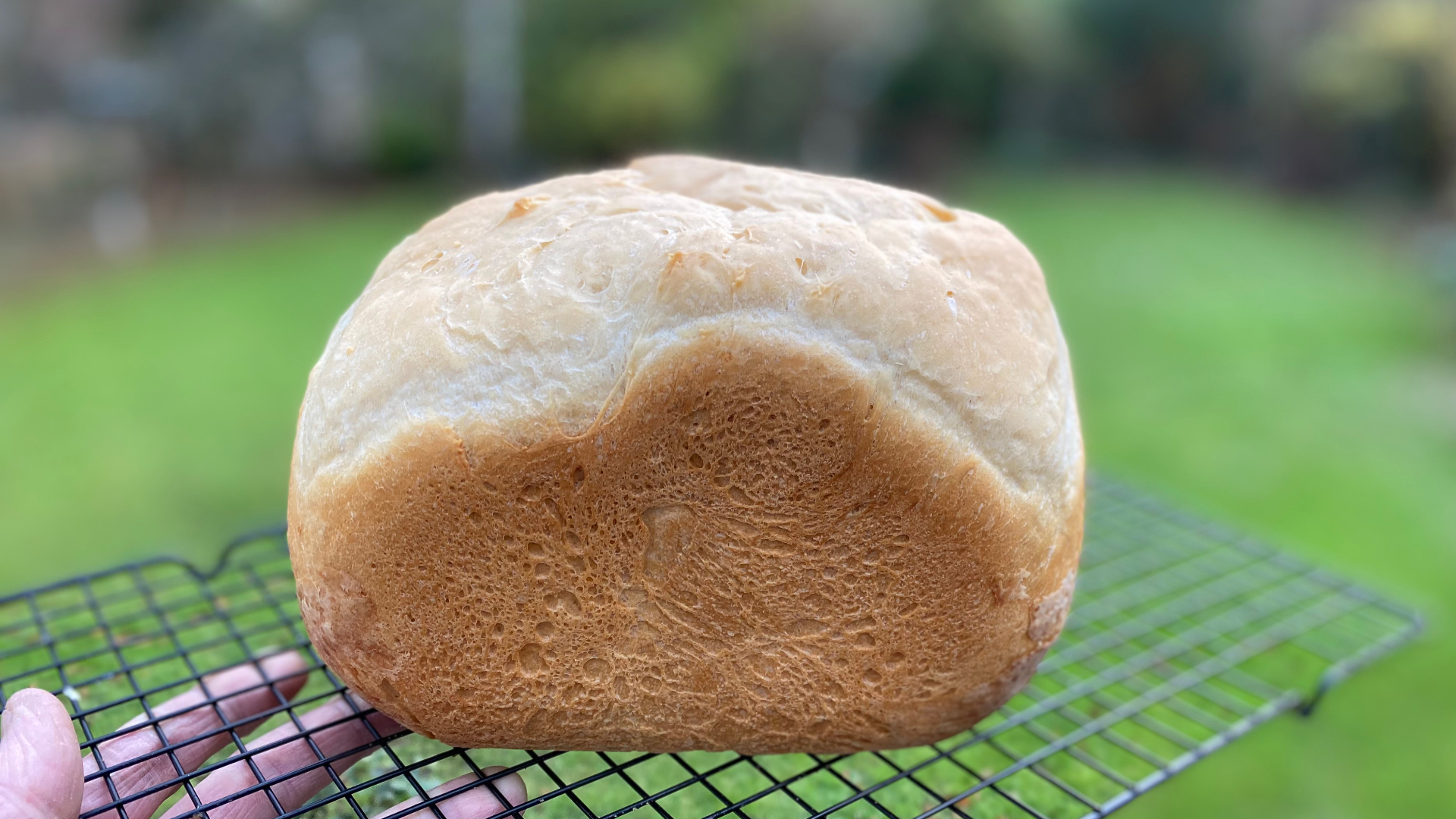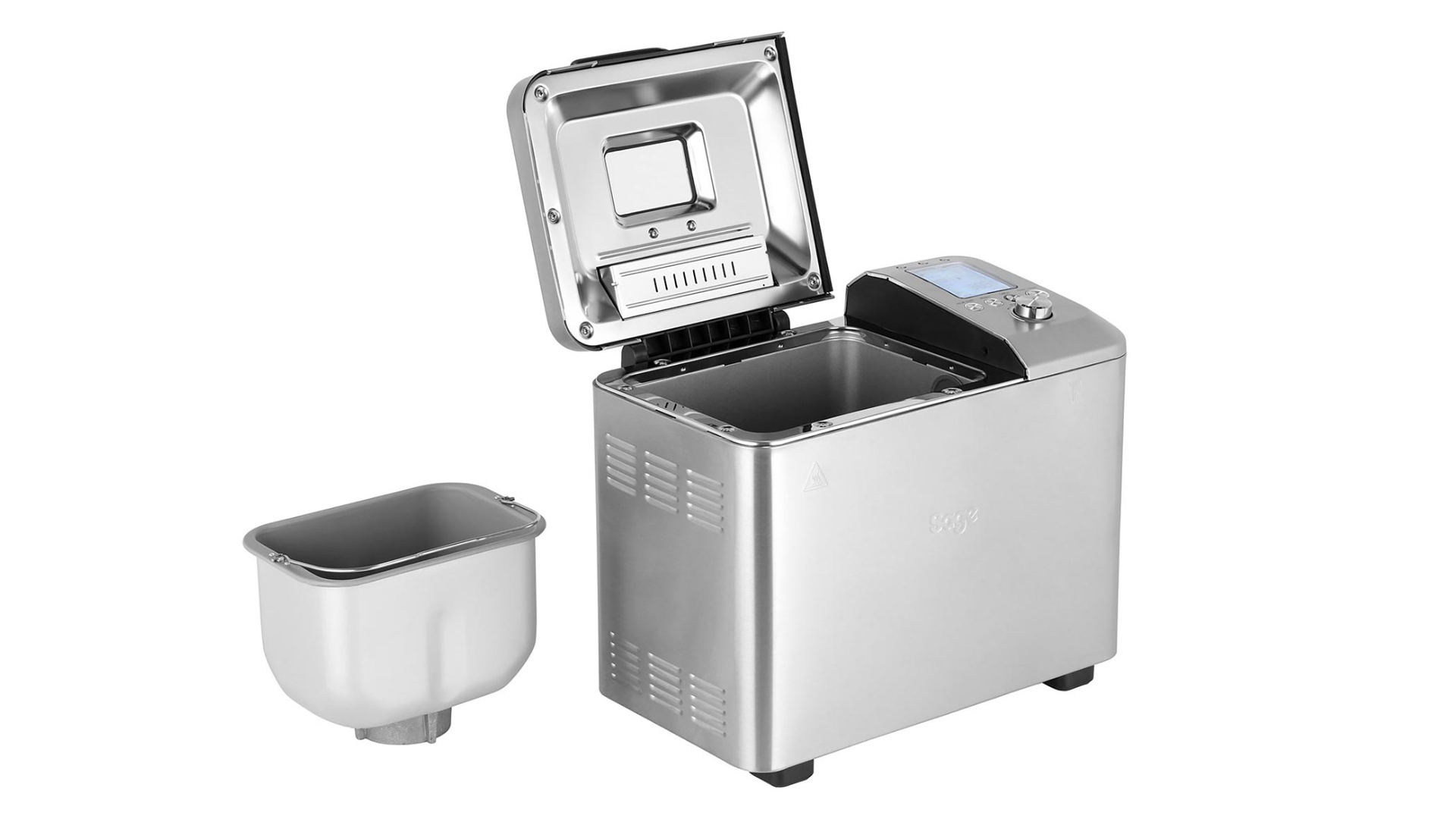Sage The Custom Loaf review: why this is the best bread maker you can buy
This top bread maker from the house of Sage is just what you knead


Bread makers come in all shapes and sizes and at a wide range of price levels, but for this reviewer the Sage Custom Loaf is the best model for ease of use, features and overall consistency. It also has one of the biggest bread baking baskets we’ve seen and that makes it a great choice for larger families.
-
+
A cinch to use
-
+
Superb interface
-
+
Excellent range of programs
-
+
Produces a loaf in under four hours
-
+
Top performer
-
-
Top crusts can look a bit anaemic
-
-
It's large
Why you can trust T3

When it comes to domestic bread maker appliances, there’s no shortage of manufacturers jumping on the bandwagon – Morphy Richards, Russell Hobbs, Tower, Lakeland, you name it, they’re all at it. However, one company, Panasonic, is consistently at the top of most ‘Best of’ guides and for good reason – its bread making machines are usually in a class of their own when it come to outstanding results on a consistent basis.
But you know what? I think the shiny silver Sage The Custom Loaf might just be the best bread maker for your doughy kneads.
Sage The Custom Loaf: design: price and availability
Sadly, the Sage The Custom Loaf isn't as readily available in the UK, but you can go straight to the Sage store where it sells for a shade under £250. Alternatively, head to the DaVinci store where it sells for just £199.
In America, all Sage products are sold under the Breville brand. However, it appears that distribution issues may have delayed most shipments though we have spied a couple of units at Amazon where it's selling for around $430. Also keep an eye on the Breville page for further news.
For the Aussie market, try Amazon (A$394) and Appliances Online where it's shifting for a slightly more reasonable A$386.
Sage The Custom Loaf review: design

In typical Sage fashion, the Custom Loaf is swathed in acres of brushed stainless steel just like the company’s superb Oracle Touch espresso machine and its brilliant Pizzaiolo Smart Pizza Oven. However, unlike most of its other products, the front end of the Custom Loaf is very plain indeed, rather like a catering machine. Let’s just say it looks a bit incongruous on the worktop. At 42 x 24 x 34cm, it’s also pretty large, but not ridiculously so.
Nevertheless, this machine has so many other attributes that I’m inclined to overlook the minimalism of its front fascia. Take the top section, for instance. Again in true Sage-like vogue, the Custom Loaf is equipped with a brilliantly simple interface and a large 4-inch LCD screen with crystal clear lettering. If you already own a Sage appliance, chances are you’ll get to grips with the interface immediately because it’s identical in concept to the majority of its other appliances. The top lid also includes a hatch for loading nuts, seeds and raisins.
Get all the latest news, reviews, deals and buying guides on gorgeous tech, home and active products from the T3 experts
Sage The Custom Loaf review: features

Uniquely, the Sage Custom Loaf is equipped with a window so you can see how the bake's going without lifting the lid
As mentioned above, the Custom Loaf is equipped with Sage’s customary interface and it’s a breeze to navigate simply by turning the main selection knob and pressing it on the setting you’re after. And speaking of settings, this model provides a wide range of different breads, from basic white, wholewheat and crusty to gluten free, sweet and yeast free. There are also functions for making dough for oven use along with pizza dough and pasta. Aside from the main push-to-select menu knob, there is also a button each for ‘Delay Start’, ‘Modify’, ‘Cancel’ and ‘Start/Pause’.
Uniquely, the Custom Loaf’s bread chamber is equipped with a glass window and an internal LED lamp which means you can see how things are going at any time during the process. Yes, the glass fogs up during kneading but the process isn’t interrupted if you lift the lid to give the glass a quick wipe.
The Custom Loaf has a larger-than-average baking chamber and can accommodate a loaf up to 1.25kgs. The pot’s base is wider and sturdier than the flagship Panasonic SD-YR2540 which means you’re less likely to knock it over when full of ingredients.
Another clever thing about this model is the design of the paddle used during the kneading process. Instead of a fixed paddle that always leaves a large hole in the base of the bread, the Custom Loaf is equipped with a collapsible paddle that stays upright during the initial kneading sequence before the motor reverses at which point the paddle collapses to lie flat. In theory the system reduces the chances of having a dirty great hole at the bottom of the loaf but on one occasion during my test it failed to collapse and left an even bigger hole than its competitors.
Sage The Custom Loaf review: how it works

The Sage Custom Loaf also features a hatch for automatic dosing of nuts, raisins and seeds
Baking bread in a dedicated machine like the Custom Loaf is as easy as making toast, especially if you use pre-prepared bread mix. Of course you can add a bit more complication to the process by creating your own specialist dough using a wide variety of ingredients but there are many great bread mixes out there that are perfect for day-to-day use.
As is the case with the majority of bread makers, when using a bread mix you simply put the entire 500g packet into the Sage’s extra-large non-stick baking pot, add 25g of butter if suggested on the packet and pour in the recommended volume of water, usually around 300ml. Now select a bread option – basic white or wholewheat – and your preferred level of browning. Hit start and retreat.
It takes about 30 minutes for the machine to warm the ingredients to room temperature at which point it starts two kneading processes followed by a lengthy three-stage proofing session and a short ‘Punch Down’ sequence to rid the dough of excess carbon dioxide before starting the baking sequence. The entire kneading, proofing and baking process is about 30 minutes faster than the Panasonic SD-YR2540 I recently reviewed – about 3 hours and 30 minutes for a large loaf.
Sage The Custom Loaf review: performance

Yes the top crust is a bit pale, but in this instance I should have opted for the darkest crust setting
I had a great deal of success with this model. Using my preferred new bread mix blend Bacheldre Bakers White Bread Mix, it produced a beautiful farmhouse white with nicely browned sides, an admittedly pale crust (my fault for not selecting a darker one) and a soft, light, airy centre. I had equally favourable results using Waitrose’s own-brand white and wholewheat mixes.
I then tried a cranberry and pistachio loaf from scratch using Sage’s online Flour Power recipe PDF. The prep was quite a task but, Mein Gott, it rocked on all fronts with a crispy crust and a sweet, chewy centre that just kept on giving. The long and short of it is that I’ve used a few bread makers over the years but this model has been the easiest yet – and, for me, the most consistent.
Sage The Custom Loaf review: verdict

If you fancy the idea of making your own bread and you’re prepared to fork out a little more dough on a machine that not only performs exceedingly well but is equipped to handle a wide variety of breads while being easy to use, the Sage Custom Loaf is a very worthwhile option. In fact, for me it’s the best bread maker on market right now.
Derek (aka Delbert, Delvis, Delphinium, Delboy etc) specialises in home and outdoor wares, from coffee machines, white appliances and vacs to drones, garden gear and BBQs. He has been writing for more years than anyone can remember, starting at the legendary Time Out magazine – the original, London version – on a typewriter! He now writes for T3 between playing drums with his bandmates in Red Box (redboxmusic).
